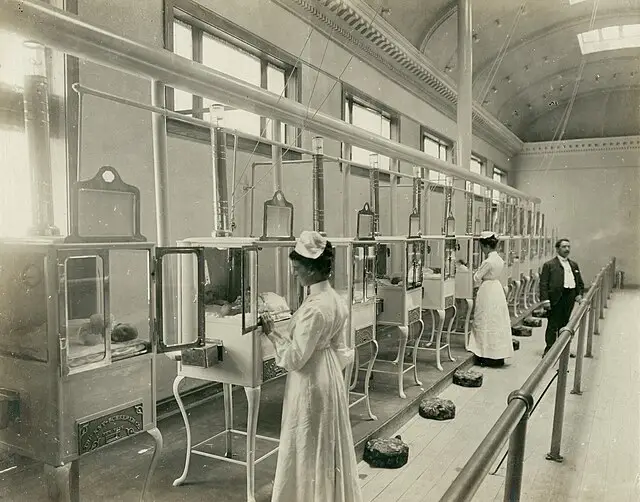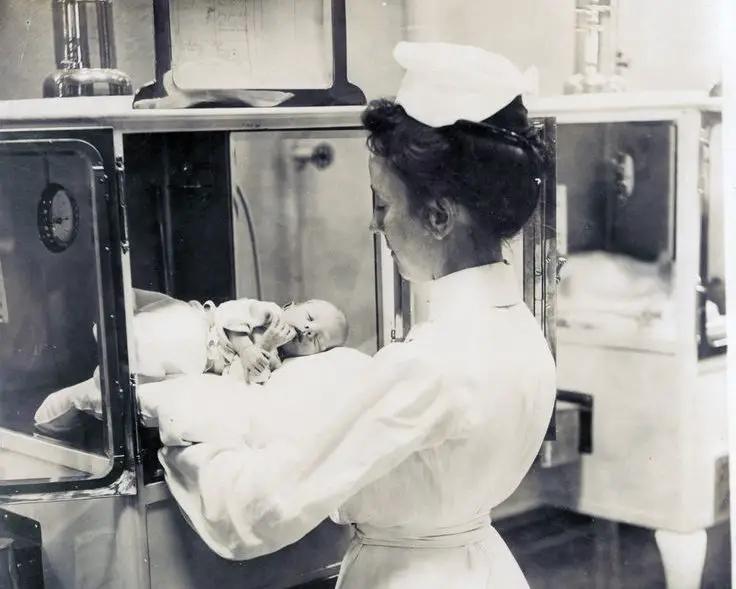Imagine strolling through a 19th-century World Fair. There are electric lights blinking for the first time, strange new contraptions puffing steam, and a massive Ferris wheel looming like some sort of mechanical god. And then, out of nowhere, there it is: a row of tiny glass boxes.
Inside? Babies. Actual, living newborns. On display. Like an art exhibit.
It sounds dystopian. But those little boxes may have saved hundreds of thousands of lives.
Why Were Babies in Glass Boxes?
To get to that, we need to talk about Paris, 1878. The man at the center of it all was Dr. Stéphane Tarnier, a French obstetrician who, despite being deeply embedded in the medical establishment, had the wild idea that maybe we shouldn’t just let premature babies die because we didn’t know what to do with them.
At the time, hospitals had little interest in preemies. They were considered too fragile, often a lost cause. Tarnier thought that was nonsense.
And one day, while walking through the Paris Zoo (yes, seriously), he saw something that stopped him in his tracks: a heated enclosure used for hatching chicks.
What if we could do that for babies?
The First “Incubator” Was Basically a Chicken Brooder
Tarnier worked with a zookeeper and a builder to develop a wooden box, heated by hot water bottles, with a ventilation system. It was crude. But it worked.
He installed several of them in Paris’s Maternité hospital. Within three years, the mortality rate for premature infants dropped by a third.
A third. Just from keeping babies warm.
This wasn’t high-tech medicine. It was, quite literally, a warmed-up box. But it flipped the script. Maybe preemies weren’t doomed. Maybe they were just cold.
Enter Pierre-Constant Budin: The Firebrand Who Fought for Tiny Lives
Tarnier laid the foundation, but his student, Dr. Pierre-Constant Budin, lit the fire.
Budin was young, driven, and had a chip on his shoulder. He’d grown up in poverty, lost his father as a child, and worked his way up through sheer will. And once he became a doctor, he saw what no one else wanted to see: that poor women and their babies were dying needlessly.
He became obsessed with neonatal care. Budin standardized Tarnier’s incubators, adding thermometers and better ventilation. He collected data. He gave lectures. He made the case that these babies mattered.
Not everyone agreed.
People accused him of wasting time on lost causes. Some even said it was unethical to keep weak babies alive. They assumed these infants would grow up to be sickly, burdensome. (Sound familiar?)
Budin didn’t care. He kept going.

The Freak Show That Saved Lives
Meanwhile, across the Atlantic, a different kind of baby-saving spectacle was about to begin.
Martin Couney was a European-born showman who claimed to be a student of Budin (historians still debate this). He wasn’t a licensed doctor. What he was, was a master of public spectacle.
Couney began exhibiting incubators and live premature infants at world expositions, starting with the 1896 Berlin Exposition, then the 1900 Paris Expo, and eventually, in a long-running attraction at Coney Island in New York.
Yes, the amusement park. Among the hot dogs and rollercoasters, there were rows of premature babies in warm glass cases. And people paid to see them.
It sounds horrifying by modern standards. But here’s the twist: the entrance fees paid for the entire operation. Parents never paid a cent. Couney hired licensed nurses, kept immaculate records, and ran the place like a hospital.
He may have saved over 6,000 babies.
What Happens When the World Watches?
Couney was a showman, but he made a point: if medicine wouldn’t prioritize these lives, the public might.
That public pressure mattered. By the 1930s, hospitals started catching up. Incubators became standard in neonatal units. Couney’s methods, while unorthodox, became a kind of proof-of-concept.
Budin, for his part, continued to publish, educate, and lobby until his death in 1907. He pushed for maternal education, breast-feeding support, and hygiene, basics we now take for granted.
The incubator itself would continue to evolve. By the mid-20th century, it was no longer a wooden box with hot water bottles. It was a sleek, sterile, high-tech lifesaver.
But it started with a chicken brooder, a zoo visit, and the stubborn belief that even the tiniest life deserved a chance.
The Real Legacy? A Shift in Who We Think Is Worth Saving
This story isn’t just about gadgets or medical advances. It’s about a philosophical shift.
Tarnier, Budin, and yes, even Couney challenged a brutal assumption baked into their society: that some people, the poor, the weak, the premature, weren’t worth the effort.
They said no. These babies aren’t mistakes. They’re patients.
And whether they knew it or not, they helped redefine the boundaries of medicine. Not as something reserved for the strong, but something that could reach into the most fragile beginnings of life and say, “Not yet. We’re not giving up.”
Sources:
1. Silverman, William A. Incubator-Babies and the Dawn of Neonatal Medicine. Pediatrics, 1979.
2. Raffel, Dawn. The Strange Case of Dr. Couney. Penguin, 2018.
3. Smithsonian Magazine. “How Coney Island’s Sideshow Incubator Babies Saved Thousands of Lives.”

